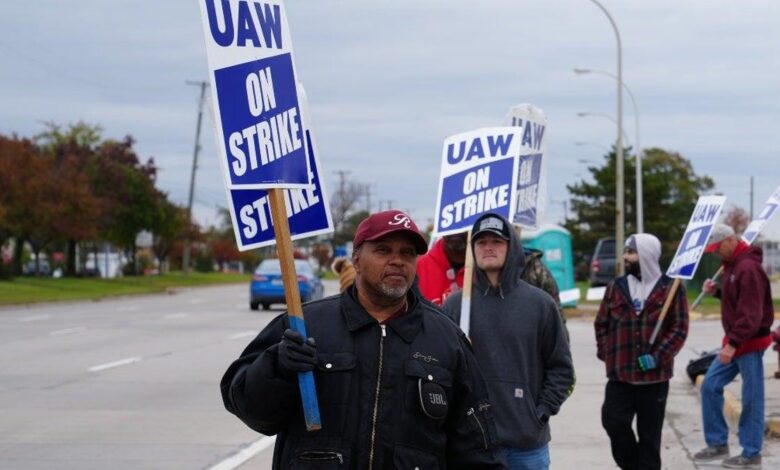Consumers Won’t Pay More For Cars Because Of Auto Worker Salary Increases

In the recently ratified new contracts with the Big Three automakers, United Auto Workers members ensured they will receive a minimum 25 percent wage increase over the next four and a half years, plus the reinstatement of long-suspended cost-of-living adjustments to keep up with inflation. Today 145,000 autoworkers will see an immediate 11 percent raise. This is among the most substantial victories for labor in decades. Don’t worry, higher labor costs won’t do much to push up the price of your next new vehicle purchase.
“The labor contracts don’t mean you go to a dealership and the car costs more money,” Ivan Drury, analyst for Edmunds, told CNN. “If wages go up 11%, an overnight change in prices is not realistic. The end result is that for the consumers, the labor cost doesn’t mean a lot.”
Your next new car will be more expensive, that’s almost a given, but it won’t be because of labor. Here are a few reasons why.
1. Everything Else Costs More
The total cost of the labor force of Ford, General Motors, or Stellantis only accounts for about seven percent of the cost of building an individual vehicle. The major cost factors in building cars are generally raw material costs and energy. As the price of metals, semiconductors, and electricity increase, the price of a car is affected much more directly.
According to Ford CFO John Lawler, the labor deal is going to impact the price of a new car by around $200 per year over the course of the four and a half-year contract. By the time every UAW member has seen their wages fully mature by the contract’s measures, those wages will account for just $950 more in per-vehicle . And that’s an estimate by Ford, which surely has no dog in this fight.
According to CNN Business, that $950 won’t be passed along to the consumer, at least not fully.
Any additional labor costs are more likely to eat into automaker profits than they are to raise prices. Ford reported that it earned about $3,000 before interest and taxes for every gas or hybrid vehicle sold to consumers in the first 9 months of the year. So a few hundred dollars a year in higher labor costs aren’t going to break the companies, or send them back to the massive losses that they experienced in the first decade of this century.
We’ve recently seen massive vehicle transaction price increases, and none of that was driven by automaker employee compensation. These price hikes have largely been driven by the American dealership network system, which buys vehicles from automakers at a wholesale price and marks them up to end consumers based on the manufacturer’s suggested retail price, adjusted after the fact depending on the state of the market. With fewer cars available due to various shortages, dealers can add market adjustments to the price, and customers continue to pay them.
2. Competition
Union shops make products that have to compete in the global market with non-union automakers and those from other countries with significantly lower worker pay. It isn’t always possible to pass along every expense to the end consumer, because competition will always keep those prices down.
Prices in a competitive market aren’t really driven by production cost anyway. Supply and demand helps set the price of a car after the fact than any contributing factor in the process of building.
Once again, from CNN Business:
Car prices are driven far more by supply and demand than by the cost of the vehicle. The average transaction price reached $48,760 in October, according to Edmunds’ data. That’s less than $50 below the record average car price set in December of 2022, and it’s up about $10,600, or 28%, from the average price in October 2017.
3. Sheer Quantity
It’s important to remember that the Detroit three sold about seven million vehicles in North America last year. That’s almost fifty vehicles sold for every UAW member in their collective employ. As an automaker makes more cars, the fixed costs of building a car account for less of the cost of building an individual unit. These kinds of economies of scale are responsible for the auto market in general. It’s a big part of why a Chevrolet costs less than a Donkervoort, despite having way more materials costs involved.
The fact of the matter is, you might notice a big difference in the price of your next car, but it won’t be because of the UAW strike and resulting labor contract. Strong unions and a strong middle class are the foundation of our economy, and this is a step in the right direction toward a resurgent America. Stop parroting broke economic falsehoods and start supporting your fellow workers.




